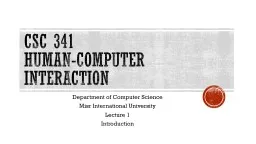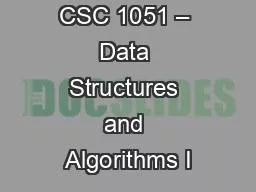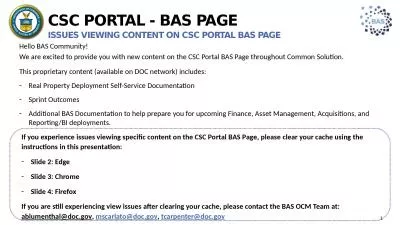PPT-CSC 341 Human-Computer Interaction
Author : leventiser | Published Date : 2020-06-22
Department of Computer Science Misr International University Lecture 1 Introduction Class Information 12 Lecturer Dr Mai Elshehaly maya70vtedu Teaching assistant
Presentation Embed Code
Download Presentation
Download Presentation The PPT/PDF document "CSC 341 Human-Computer Interaction" is the property of its rightful owner. Permission is granted to download and print the materials on this website for personal, non-commercial use only, and to display it on your personal computer provided you do not modify the materials and that you retain all copyright notices contained in the materials. By downloading content from our website, you accept the terms of this agreement.
CSC 341 Human-Computer Interaction: Transcript
Download Rules Of Document
"CSC 341 Human-Computer Interaction"The content belongs to its owner. You may download and print it for personal use, without modification, and keep all copyright notices. By downloading, you agree to these terms.
Related Documents














